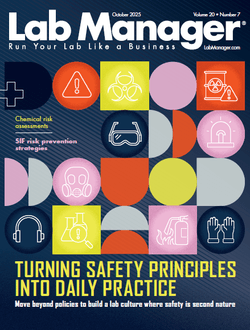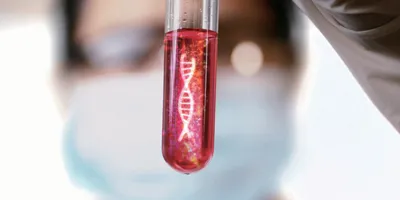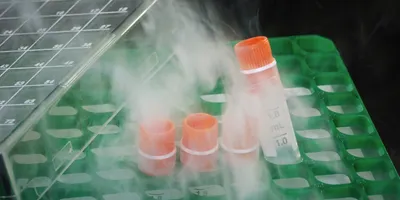 Lettuce grows larger when fertilized with pollen-derived carbon dots.Photo credit: American Chemical SocietyAs the world population continues to balloon, agricultural experts puzzle over how farms will produce enough food to keep up with demand. One tactic involves boosting crop yields. Toward that end, scientists have developed a method to make a low-cost, biocompatible fertilizer with carbon dots derived from rapeseed pollen. The study, appearing in ACS Omega, found that applying the carbon dots to hydroponically cultivated lettuce promoted its growth by 50 percent.
Lettuce grows larger when fertilized with pollen-derived carbon dots.Photo credit: American Chemical SocietyAs the world population continues to balloon, agricultural experts puzzle over how farms will produce enough food to keep up with demand. One tactic involves boosting crop yields. Toward that end, scientists have developed a method to make a low-cost, biocompatible fertilizer with carbon dots derived from rapeseed pollen. The study, appearing in ACS Omega, found that applying the carbon dots to hydroponically cultivated lettuce promoted its growth by 50 percent.
Equipped with exceptional mechanical, thermal, optical and electrical properties, carbon nanomaterials are commonly associated with complex devices. Surprisingly, these materials could also have potential agricultural applications—some studies have shown that they increase plant growth. The problem with this concept, however, is that many carbon nanomaterials are expensive to produce and usually come with heavy metal contamination. For a safer alternative, Yingliang Liu, Bingfu Lei and colleagues turned to carbon dots, which previous studies have shown are biocompatible.
The researchers synthesized carbon dots by breaking apart and heating rapeseed pollen. The high-yield process was relatively inexpensive, costing 3 cents per gram. Testing the material as fertilizer on lettuce showed that at a concentration of 30 milligrams per liter of a nutrient solution, the plant biomass was nearly 50 percent greater in treated plants than those that didn't receive the carbon dots. Additionally, because carbon dots are fluorescent, the researchers could track the materials under ultraviolet light. They saw that the materials were distributed mainly in the leaves. Further analysis also demonstrated that the levels of vitamin C, and soluble sugars and proteins weren't affected.
The authors acknowledge funding from the National Natural Science Foundation, the Science and Technology Planning Project of Guangdong Province, the Guangzhou Science & Technology Project, the Guangdong Natural Science Foundation, and the Foundation for High-Level Talents in Higher Education of Guangdong Province.











